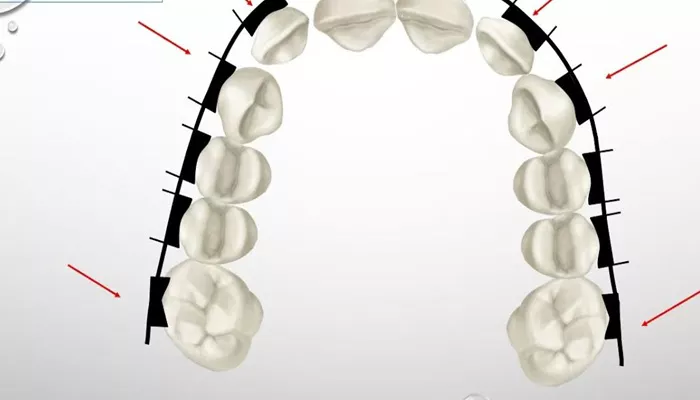Orthodontic treatment is a common procedure aimed at correcting misaligned teeth and jaws. While braces are effective in achieving a straighter smile, they can sometimes cause discomfort, particularly when wires protrude and poke the inside of the mouth. This discomfort can be exacerbated by the movement of teeth, which can cause the archwire to shift out of place. Understanding how to safely cut orthodontic wires can provide immediate relief from discomfort and prevent further irritation. This article will guide you through the process of cutting orthodontic wires, including the necessary tools, techniques, and safety precautions.
What Is Orthodontic Wires?
Orthodontic wires, primarily archwires, are crucial components of braces. They connect brackets and apply pressure to teeth, guiding them into the desired position. Over time, as teeth shift, the wires may extend beyond the brackets, leading to sharp ends that can poke the cheeks or gums.
Types of Orthodontic Wires
Archwires: The main wire that runs along the brackets.
Ligature Wires: Thin wires that hold the archwire in place.
Coil Springs: Used to create space between teeth.
Each type of wire serves a specific purpose in the orthodontic treatment process, and understanding their roles can help in identifying which wire may be causing discomfort.
SEE ALSO: 5 Types of Teeth Often Removed During Orthodontic Treatment
Tools Needed for Cutting Orthodontic Wires
Before attempting to cut orthodontic wires, it is essential to gather the appropriate tools. The following items are commonly recommended:
|
Tool |
Description |
| Nail Clippers | A clean pair of nail clippers can effectively cut wires. Ensure they are sterilized before use. |
| Orthodontic Wire Cutters | Specialized tools designed for cutting orthodontic wires. These are often more precise than nail clippers. |
| Tweezers | Useful for repositioning wires before cutting. |
| Pencil Eraser | Can be used to bend wires into a more comfortable position. |
| Dental Wax | Provides temporary relief from irritation after cutting. |
Steps to Cut Orthodontic Wires Safely
Cutting orthodontic wires should be approached with caution. Follow these steps to ensure a safe and effective process:
Step 1: Assess the Situation
Before cutting, determine which wire is causing discomfort. Check if the wire is merely bent or if it has slipped out of its bracket. If it is bent, you may be able to reposition it without cutting.
Step 2: Gather Your Tools
Collect the necessary tools listed above. Ensure that your nail clippers or wire cutters are clean and sterilized to prevent infection.
Step 3: Prepare the Area
Wash Your Hands: Clean your hands thoroughly to avoid introducing bacteria into your mouth.
Dry the Area: Use a clean cloth or gauze to dry the area around the wire. This will help you see better and ensure that wax adheres properly if needed.
Step 4: Position Yourself
Find a comfortable position in front of a mirror. This will allow you to see the wire clearly. If possible, have someone assist you to ensure steadiness.
Step 5: Pull Back the Cheek
Gently pull back your cheek to expose the wire. This will provide better access for cutting.
Step 6: Cut the Wire
Locate the Wire: Identify the exact spot where the wire is poking you.
Use Your Tool: With the nail clippers or wire cutters, carefully position the tool over the wire, behind the last bracket.
Make the Cut: Apply gentle pressure to cut the wire. Be cautious not to cut too close to the bracket, as this may cause discomfort or damage.
Step 7: Remove the Cut Wire
After cutting, ensure that the piece of wire is removed from your mouth to prevent accidental swallowing.
Step 8: Apply Dental Wax
Once the wire is cut, apply a small amount of dental wax over the area to protect your cheeks and gums from further irritation.
Safety Precautions
Cutting orthodontic wires should be done with care. Here are some safety precautions to consider:
Avoid DIY Solutions: While it may be tempting to use household items like scissors or pliers, these can be dangerous and may cause injury.
Do Not Rush: Take your time when cutting the wire. Rushing can lead to mistakes and potential harm.
Consult Your Orthodontist: If you are unsure about cutting the wire or if the issue persists, contact your orthodontist for professional assistance.
When to Seek Professional Help
While cutting orthodontic wires can provide temporary relief, it is crucial to schedule an appointment with your orthodontist as soon as possible. Persistent issues with protruding wires may indicate that the braces need adjustment or that the wire needs to be replaced entirely.
Conclusion
Understanding how to cut orthodontic wires can alleviate discomfort caused by braces. By following the proper steps and using the right tools, patients can manage minor issues at home. However, it is essential to remember that these solutions are temporary, and professional care is necessary for long-term orthodontic health.

